IC1805, IC1848 and Double Cluster region in HOO, RGB stars
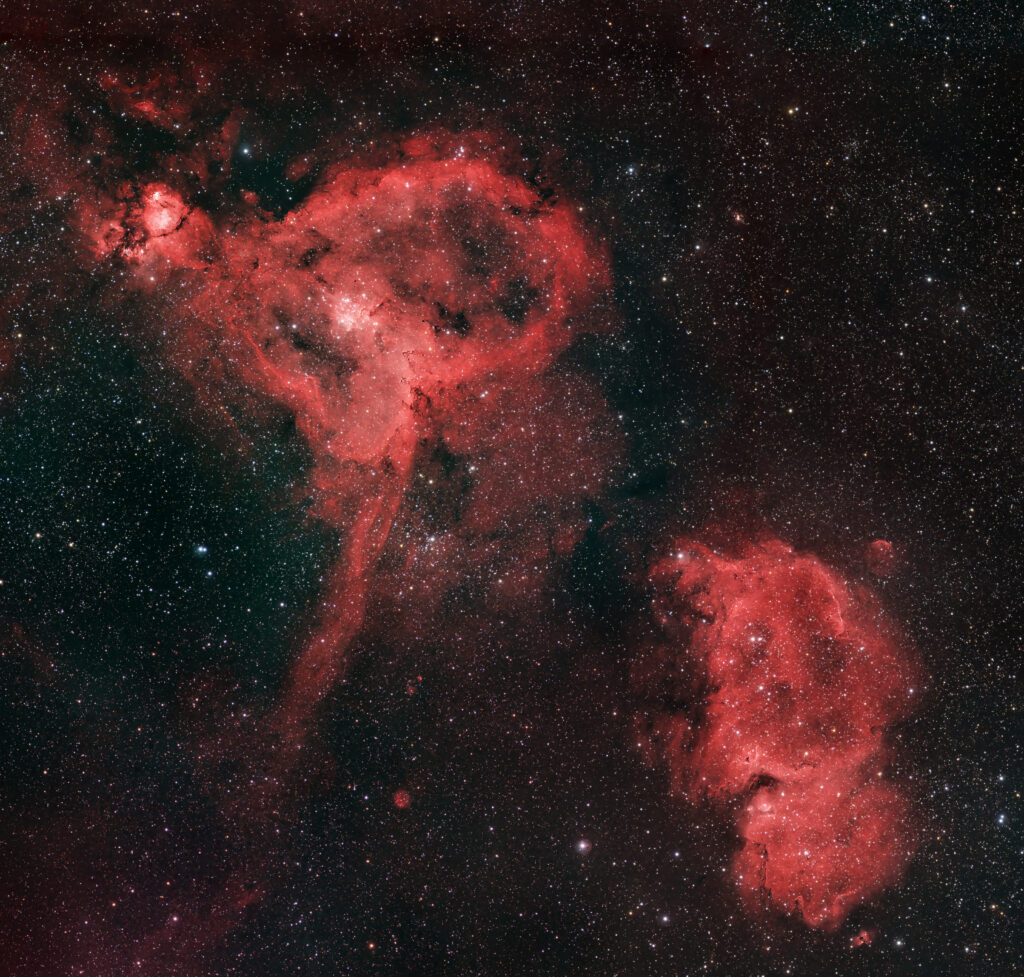
Mosaic made by 9 panels, with starless master in narrowband, HOO palette, and stars integration in RGB.
Narrowband subframes of 180″, 300″ and 600″, RGB subframes at 60″ exposure.
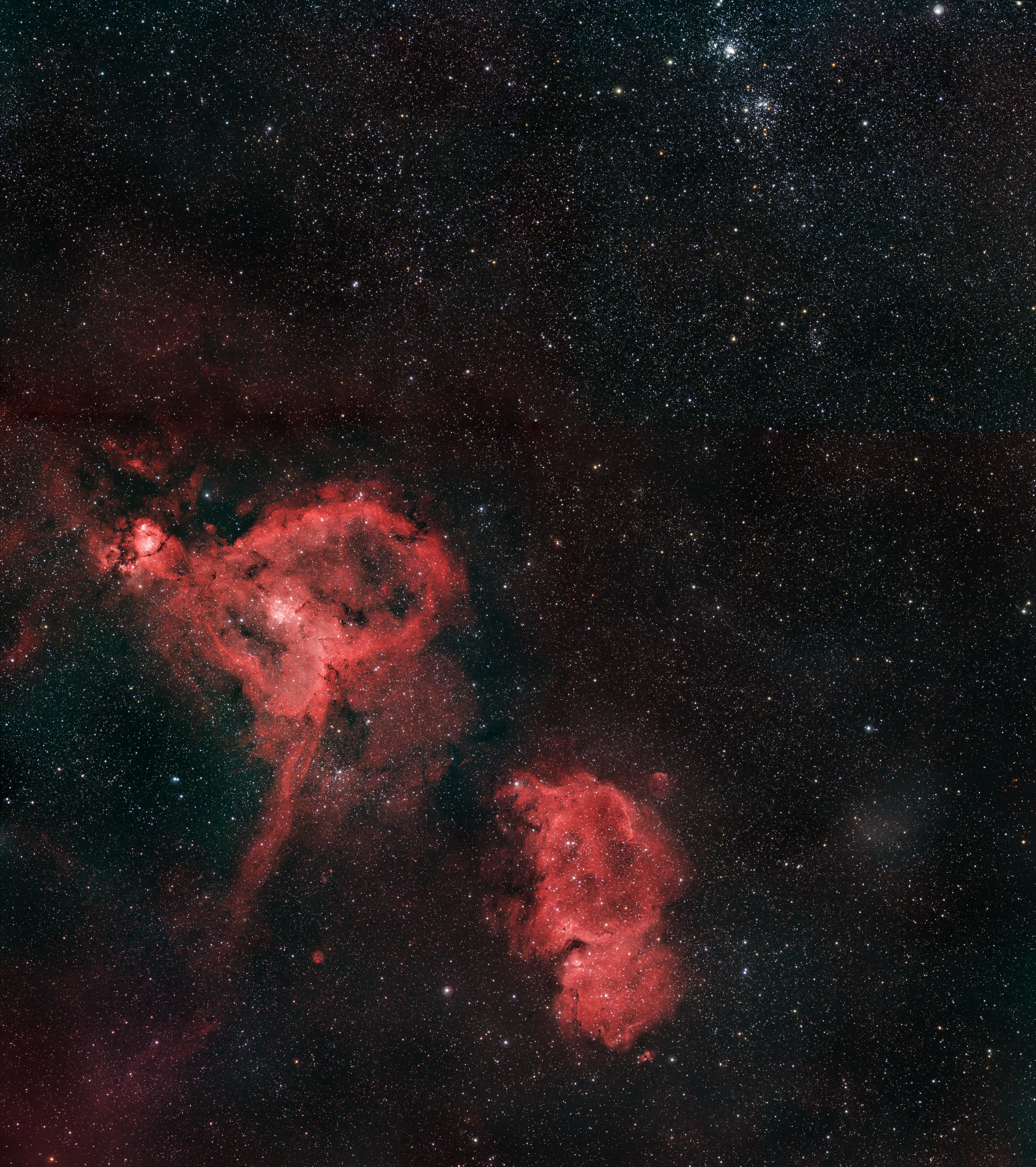

Mosaic made by 9 panels, with starless master in narrowband, HOO palette, and stars integration in RGB.
Narrowband subframes of 180″, 300″ and 600″, RGB subframes at 60″ exposure.

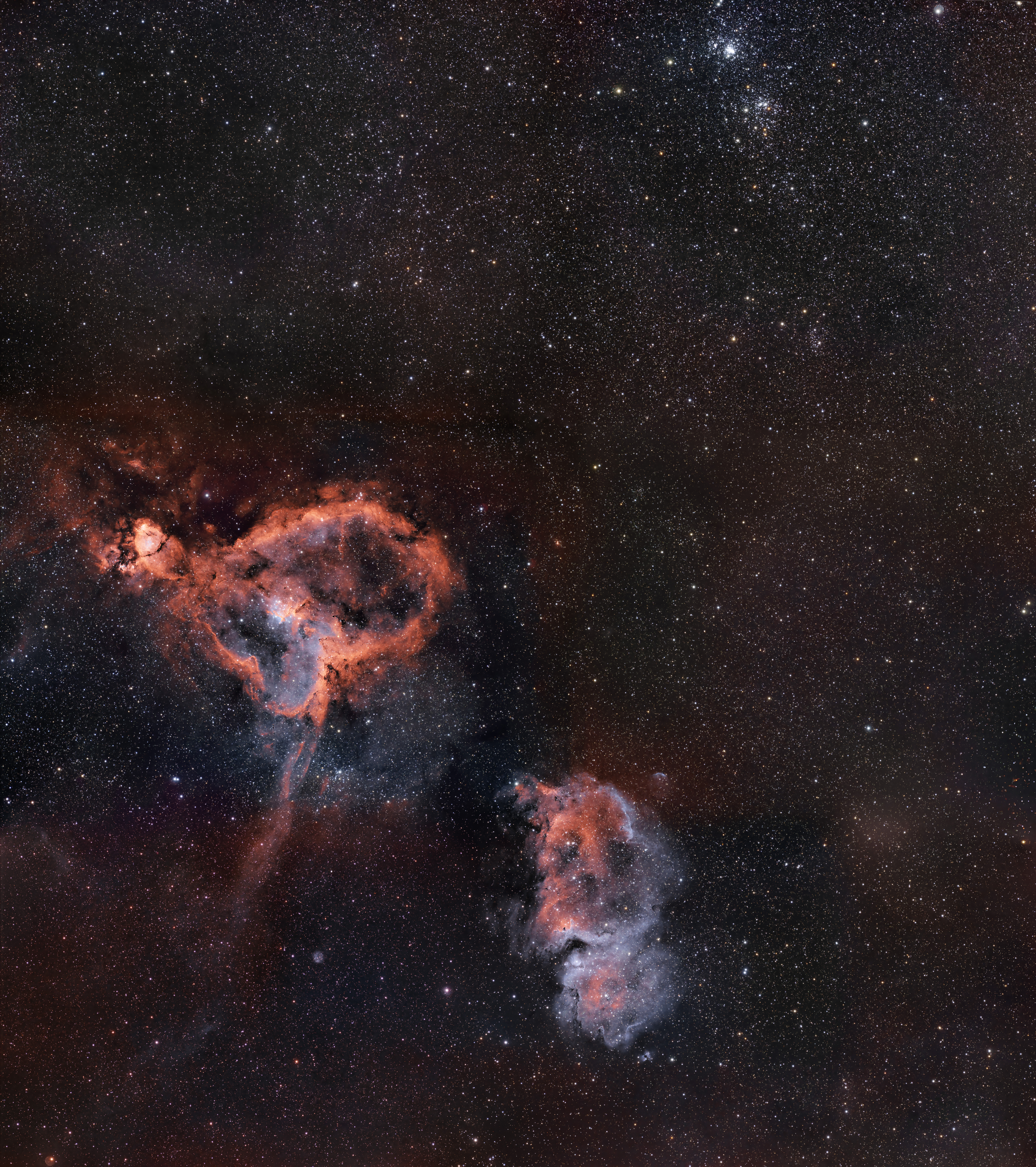
Mosaic made by 9 panels, with starless master in narrowband, SHO palette, and stars integration in RGB.
Narrowband subframes of 180″, 300″ and 600″, RGB subframes at 60″ exposure.
Astrobin:
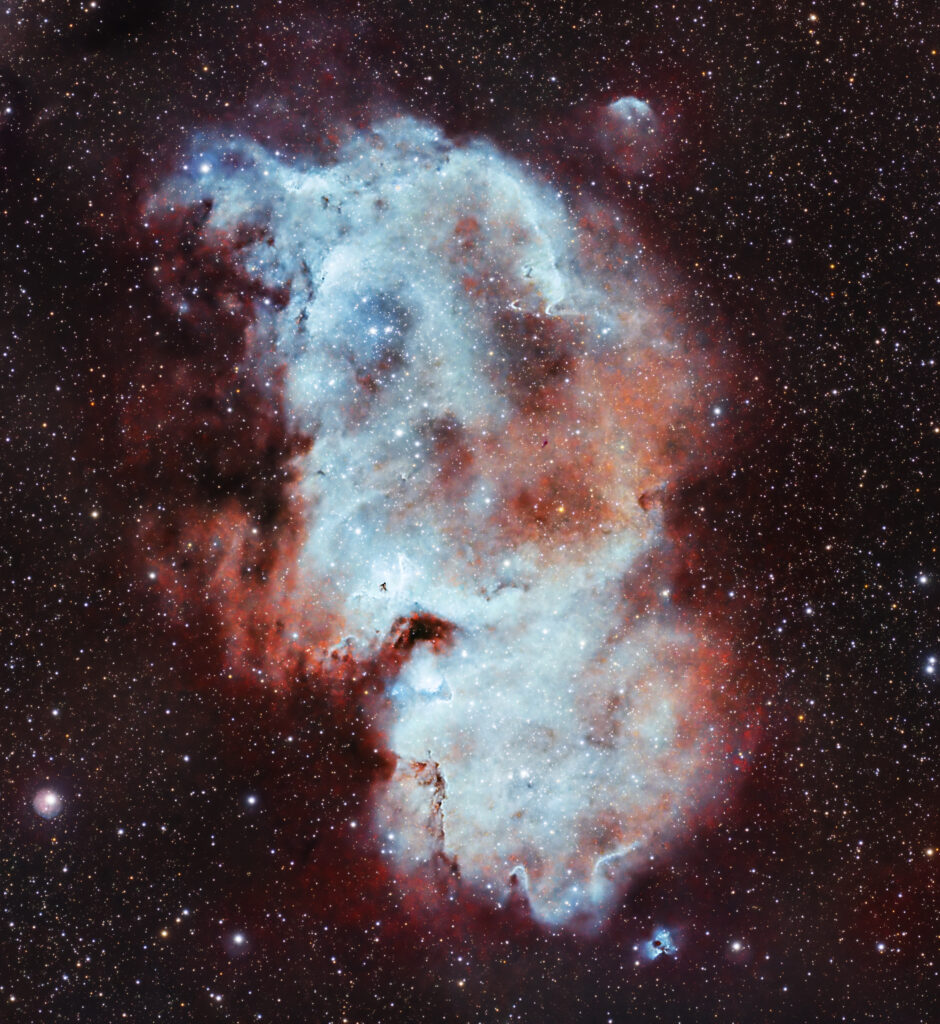
IC1848 in narrowband, with stars in RGB. SHO palette and cropped field to best focusing about Soul Nebula IC1848.
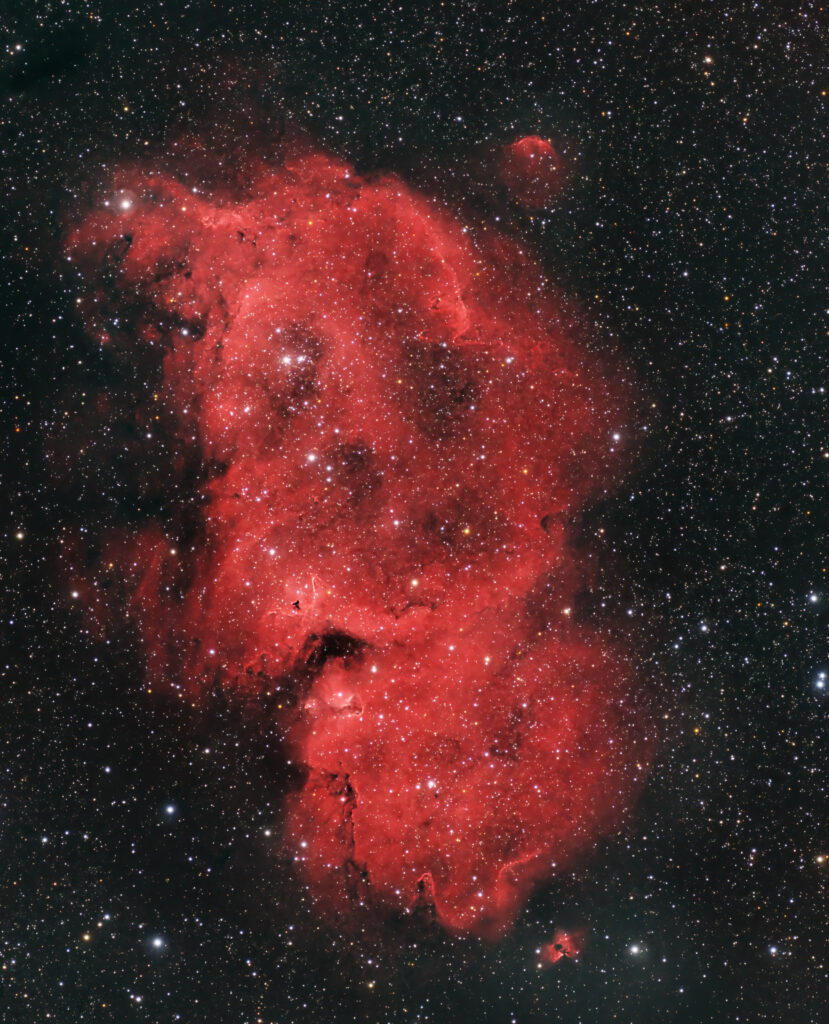
HOO palette and RGB stars
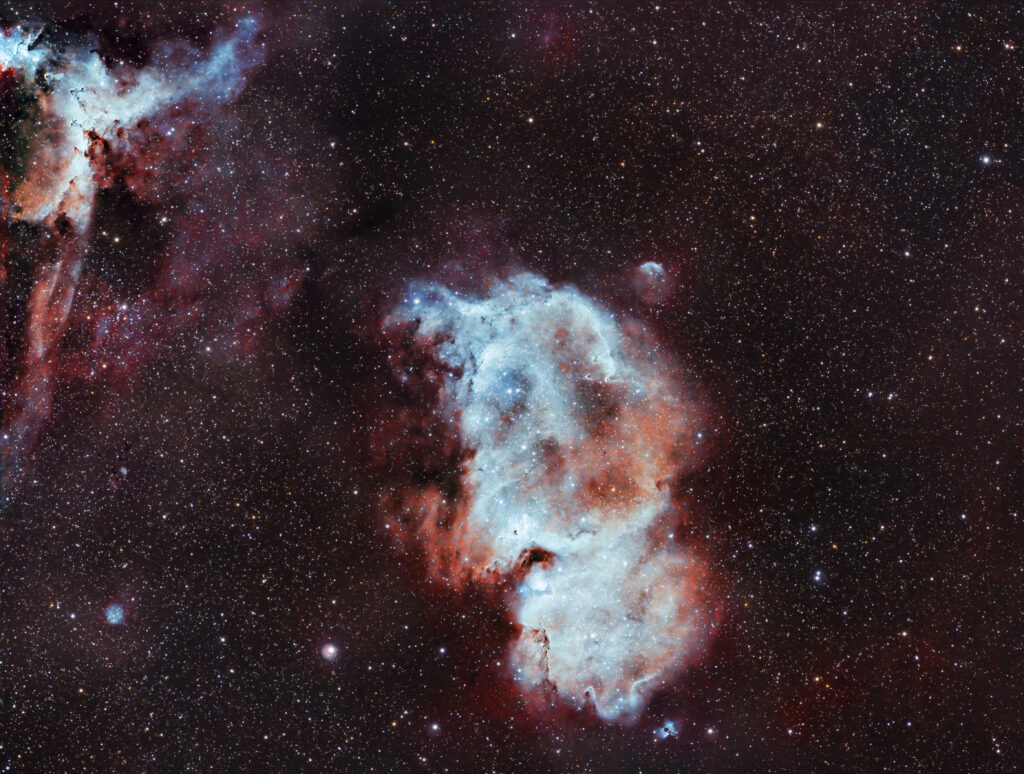
Wider field from original integration, with part of IC1805 on the top left
Astrobin:
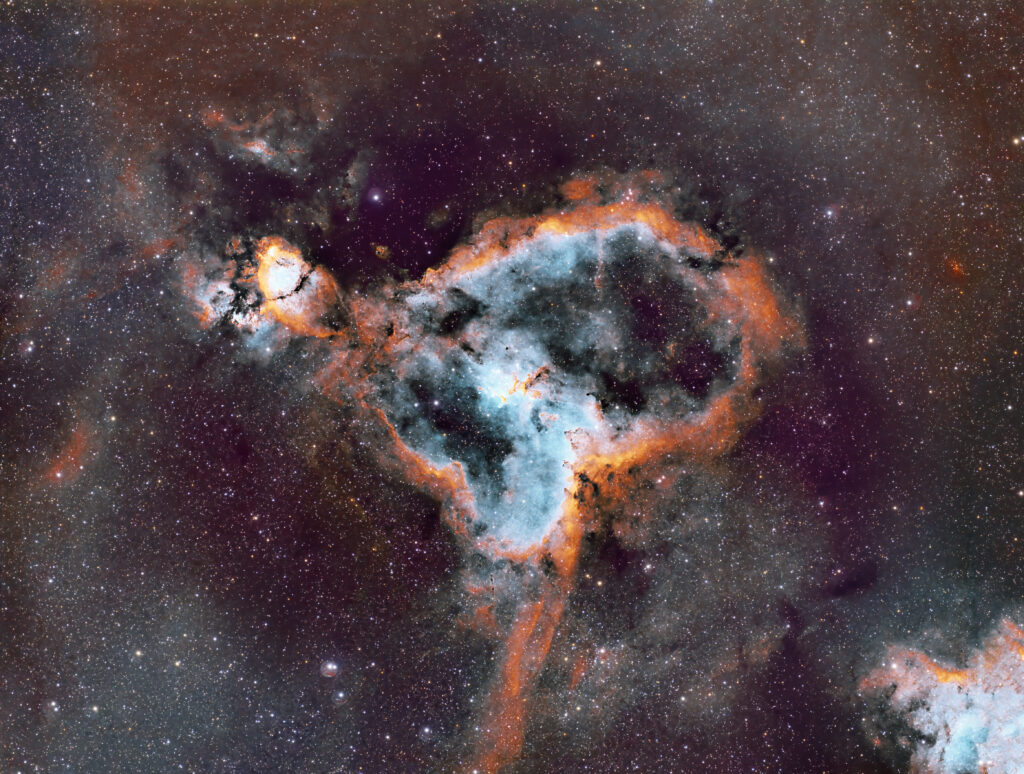
New workflow focused about IC1805 with narrowband and RGB data addiction.
AFter PixInSight normal workflow, parallel for SHO, HOO and RGB integration, I reached the point of star separation from nebuloisty. Starless SHO and HOO files was developed with color masks and curves transofrmation in PixInSight, thus finally cleaned and polished by NoiseXTerminator and BlurXTerminator.
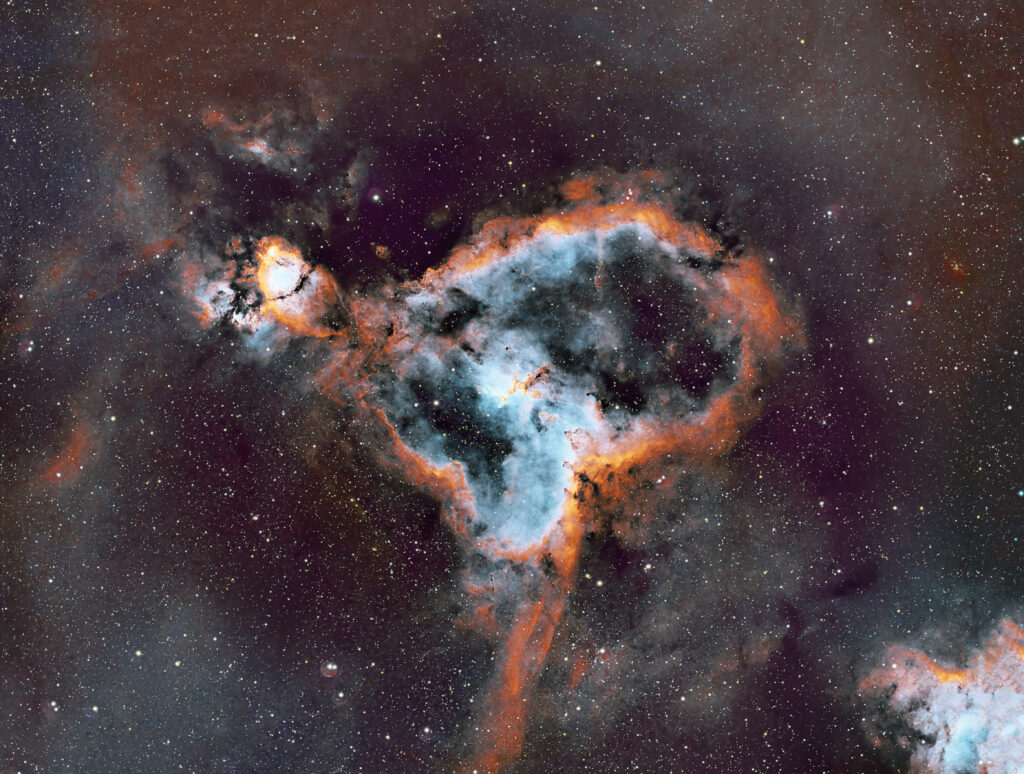
SHO, starless and stars
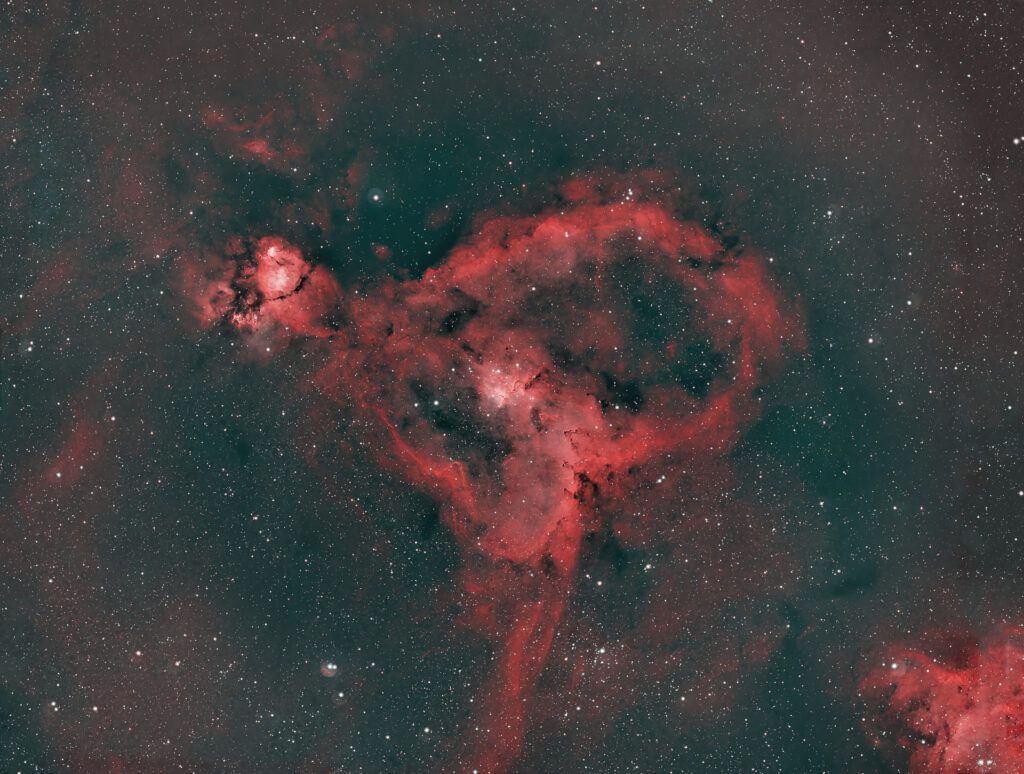
HOO palette, starless and stars
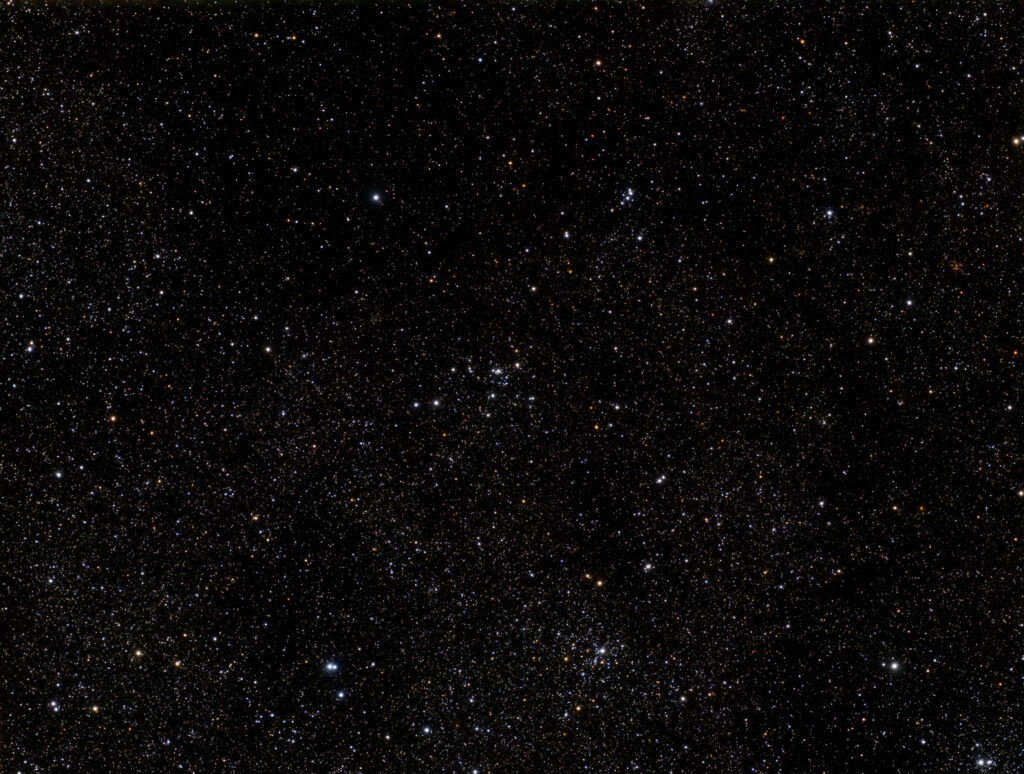
RGB stars master was simply saved as .tiff.
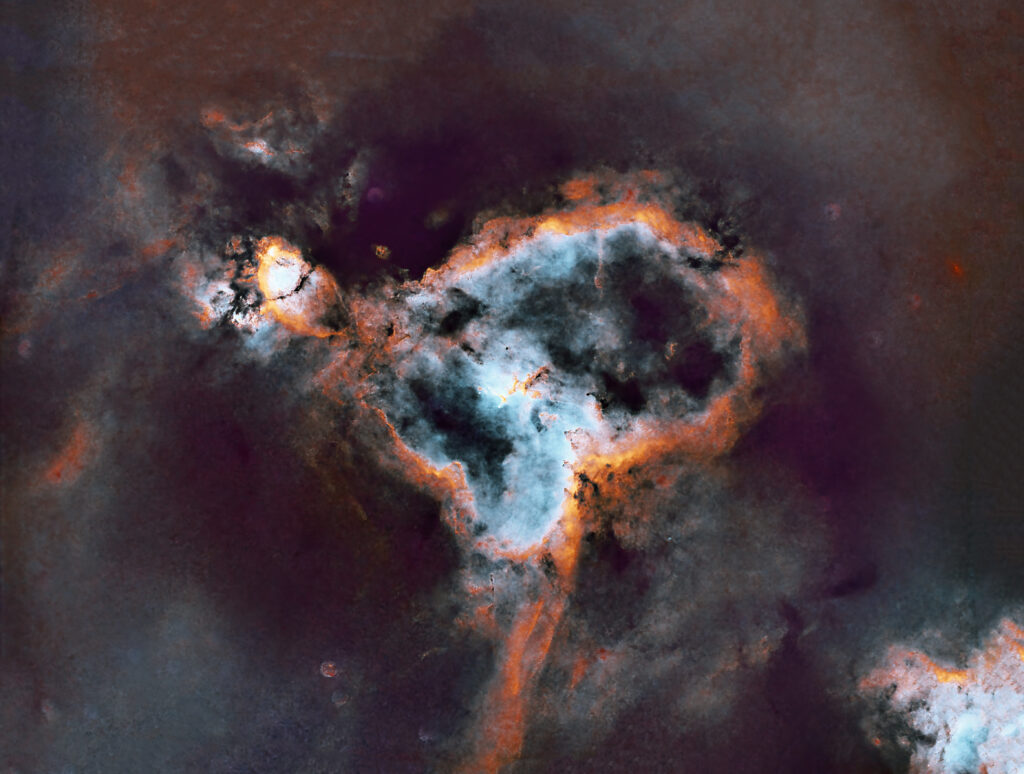
SHO starless after adjustements and pixel fixing
Starless and stars composition made in Photoshop, after dedicated adjustements, with screen stars layer blending over starless SHO nebula.
Astrobin:
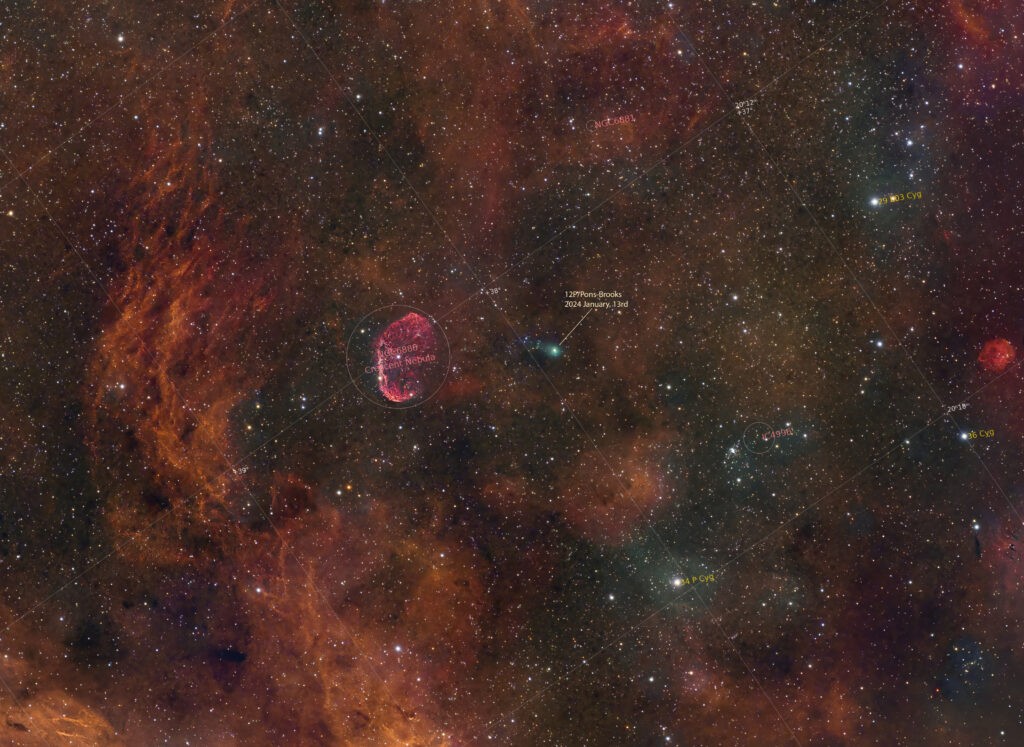
Comet Pons-Brooks passing by C27, 13 January 2024.
Comet starless integrations by subframes in LRGB 60″, 3 x each filter. Star integration from RGB.
C27 and surrounding starless layer in Ha Oiii and Hbeta, 180sec subframes, from 2023 spring-summer several sessions; cfr. https://www.astrobin.com/dqa6po/C/
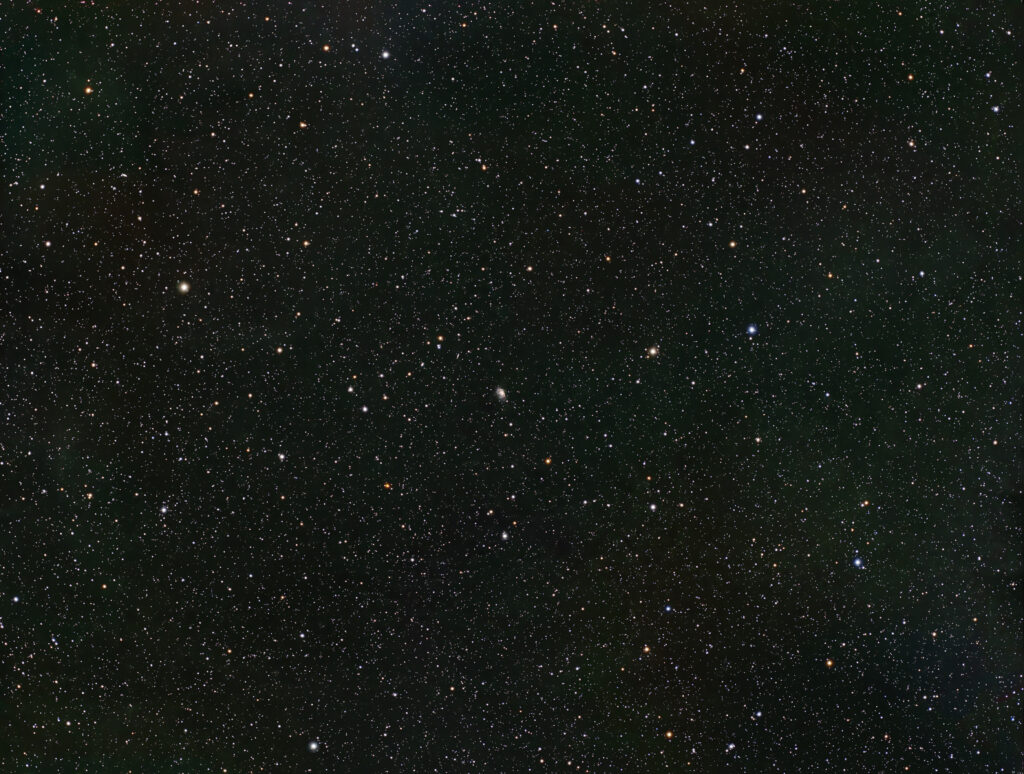
NGC 1961 group data recorded between 23/09/2021 and 06/12/2021 with William Optics Redcat 51 and ASI1600mm Pro at -20C, LRGB subframes with 60sec. exposure, Ha and Oiii narrowband subframes at 180 seconds, from Livorno home town, under Bortle 6 sky.

Ha and Oiii narrowband channel records I used to boost respectively R and GB channel; starless and stars final integration in Photoshop as blending layers groups with due adjustements.
Annotated integration (by PixInSight) evinced the huge quantities of galaxies available in this pretty wide field, I thus focused my study about NGC 1961 group and peculiarities of NGC 1961 galaxy.
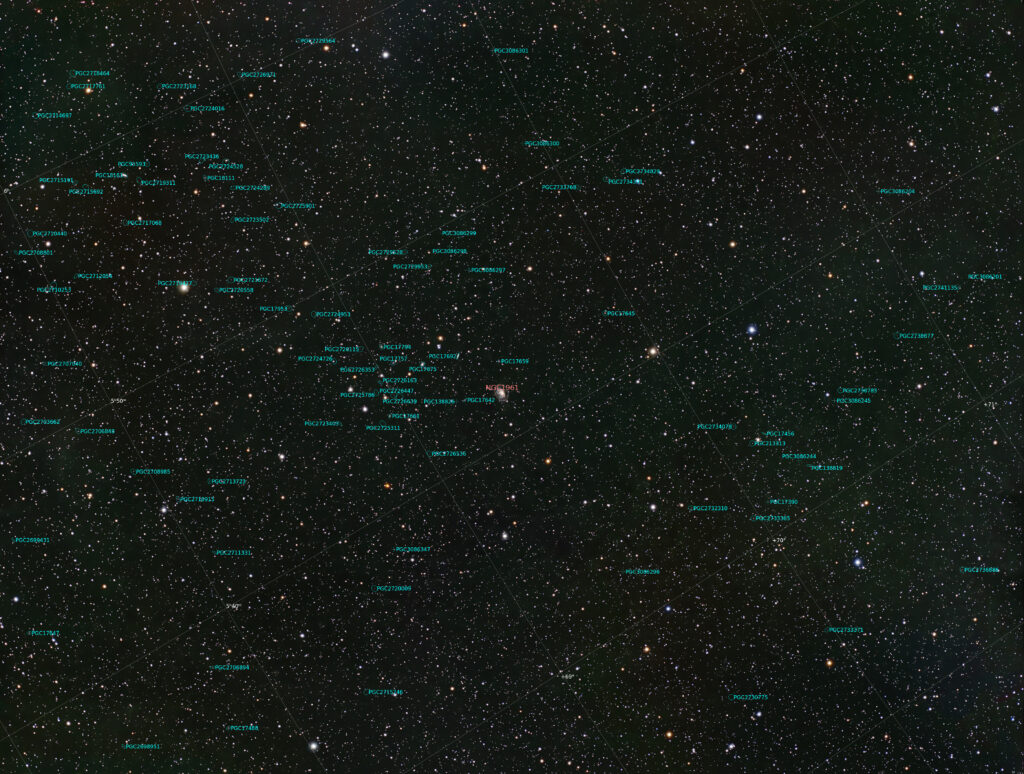
Located at about 180 million light years away NGC 1961 resides in the constellation of Camelopardalis and it is classified as an intermediate spiral and an Active Galactic Nuclei – AGN type of galaxy, with intermediate spirals in between “barred” and “unbarred” status, meaning they don’t have a well-defined bar of stars at their centers. As other AGN, there is a very bright center that often far outshine the rest of the galaxy at certain wavelengths of light, and this kind of galaxies likely presents with a supermassive black hole at their cores churning out bright jets and winds that shape their evolution; NGC 1961 is a fairly common type of AGN as it emits low-energy-charged particles[i].
Panoramic Survey Telescope and Rapid Response System (Pan-STARRS) data retrieved from MAST archive permitted the elaboration of colorful image cropped to NGC 1961 and surroundings,
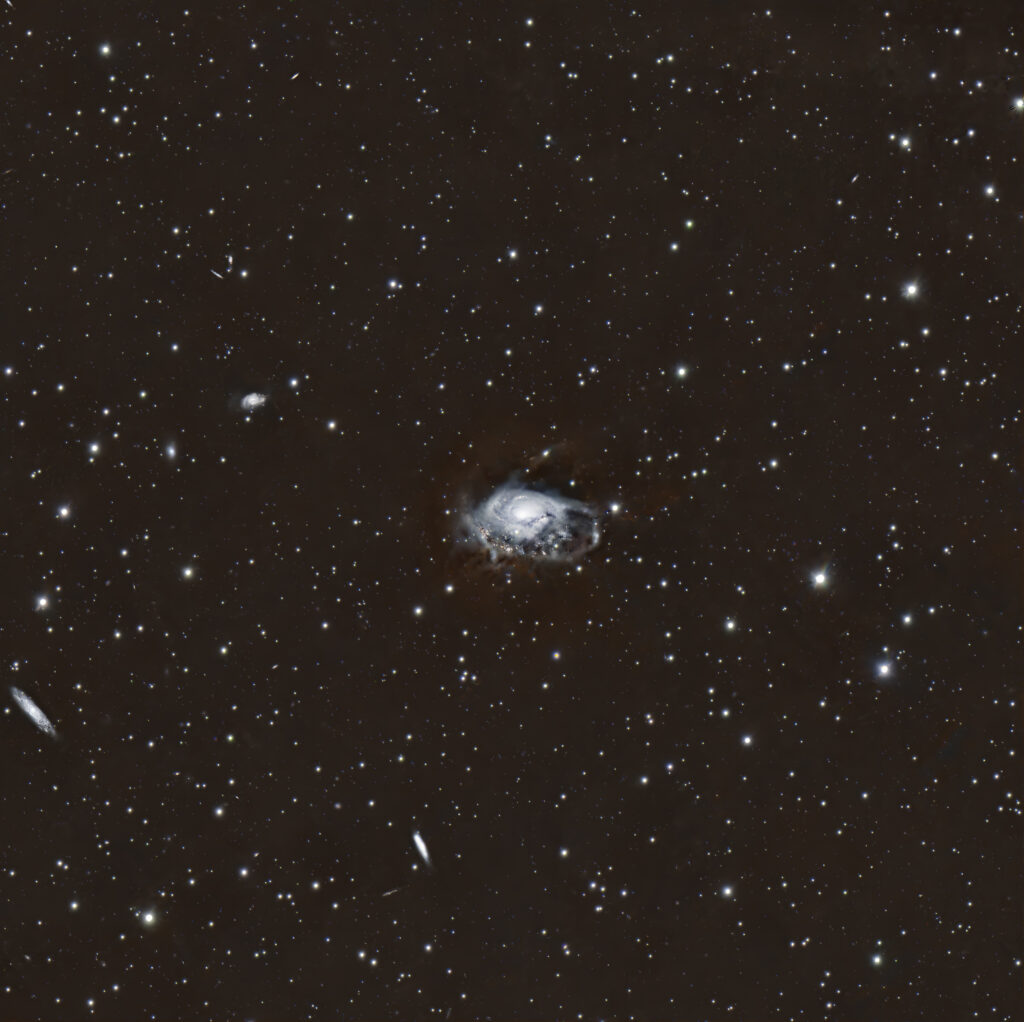
with annotations of limitrophe Peculiar Galaxies identification and references of field coordinate.
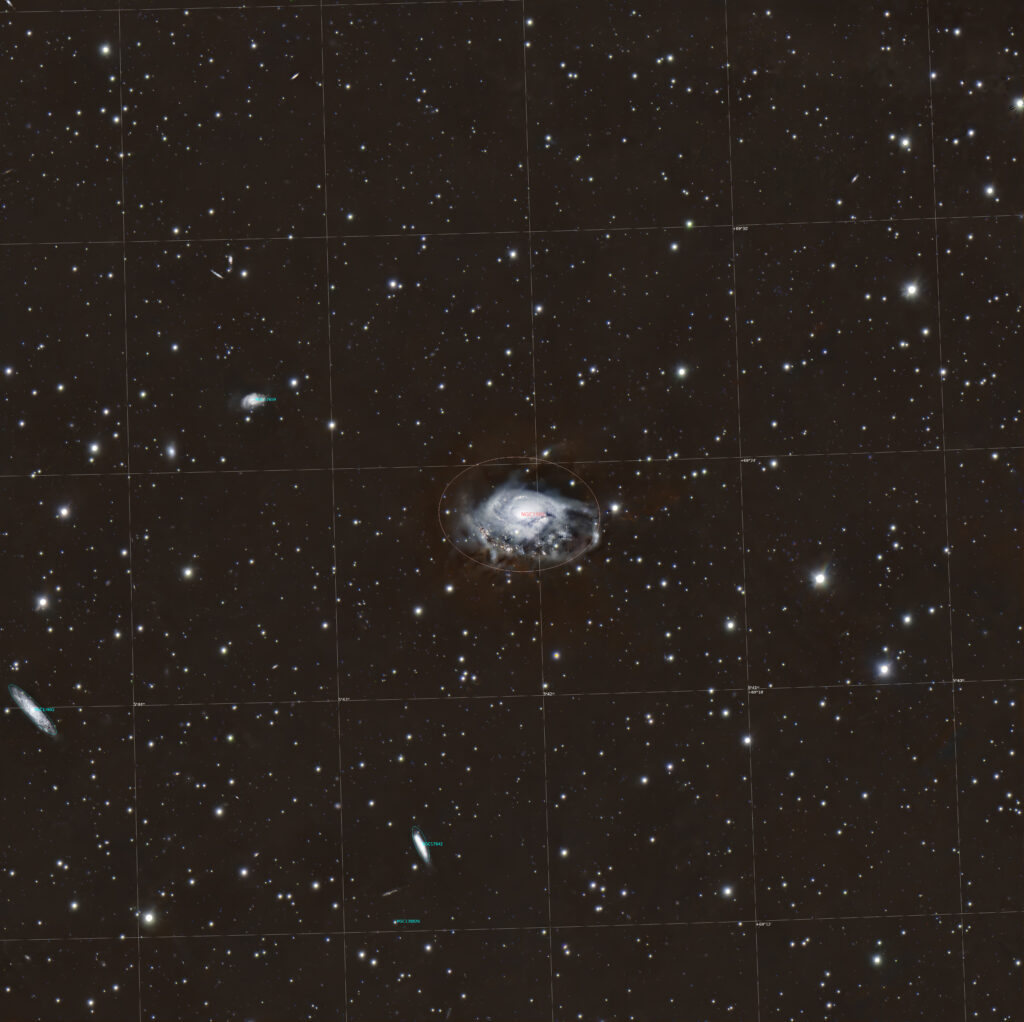
Rubin, Ford and Roberts, 1979, Pence and Rots 1996 defined NGC 1961 as one of the most massive known Sc spiral galaxies[ii] with an asymmetric optical appearance[iii], a starburst nucleus[iv] and strong neutral Hydrogen Hi emission[v].
According to Gotterman and colleagues the properties of the peculiar disc galaxy NGC1961 have been rediscussed recently in the light of the new observations by Shostak et.al., 1982[vi] who investigated deeply about its mass, estimating to be at least 1,5 x 10¹² Mꙩ. This makes NGC 1961 the most massive disc system known, peculiar also in being situated at the North-West edge of a group of which previously five, then seven galaxies have been detected at today[vii]:
Gotterman team considered two alternatives’ hypotheses concerning the group: NGC1961, together with nearby galaxies, constitute a bound group or NGC1961 is an interloper impinging upon a bound system consisting of the other five galaxies.
If the full group of six galaxies is stable, then the analysis confirms the mass of NGC 1961 to be greater than 10¹² Mꙩ, with a very less obvious modality of distribution of masses, strictly related to the presence of a significant and massive halo, with a radius of 244 Kiloparsec.
Considering the second hypothesis, if NGC 1961 is an interloper in the reduced group of five galaxies, it does require several coincidences, as for instance at least 2 x 10¹² Mꙩ of unseen non-gaseous form of matter to stabilize this smaller group, with interesting questions about how this mass is distributed[xi], and this is coherent with Fabbiano and Trinchieri 1992 studies of NGC 1961 group suggested it was likely to contain a dense intragroup medium (IGM)[xii].
According to Pence and Rots 1997[xiii] the presence of hot X-ray emitting stars in small groups of galaxies has been a topic of renewed research interest: as for instance evinced by Forman and Jones or Biermann, Kronberg and Madore[xiv] while cluster and dense compact group of galaxies have long been known to have diffuse X-ray emission, it is only recently that X-ray emission has also been found in significant numbers of the smaller groups of galaxies which scholars believe to be much common in the universe[xv]. Moreover, according to Ponman & Bertram 1993 and David and colleagues 1994[xvi], presence of hot gas in these small groups provides important clues about their origin and evolution, and measurement of the radial gas density and temperature profiles also provides the most reliable estimate of the total mass of the group.
Pence team observation by ROSAT X-ray observatory look for diffuse X-ray emission from the group, calibrated by the exposure map generation algorithm developed by Snowden 1994[xvii], available in the ROSAT IDL library[xviii] (Reichart 1993). They detected 47 probable X-ray sources with only three clearly identifiable with optical objects: the second brightest X-ray source in the field is associated with NGC 1961 galaxy and two other faints coincide with 8th magnitude foreground B stars, with other six galaxies in the group, but none of them had detectable X-ray emission. Moreover, there was also no obvious diffuse emission either around NGC 1961 or near the center of the group.
Pence and colleagues evinced that NGC 1961 Is the only galaxy in the group to have detectable X-ray emission, and confirming the previous Einstein observations made by Shostak team 1982, it seems possible to suggest that the X-ray flux isn’t centered on the galaxy but concentered in an arc of 180 degrees of emission on the southeast side of the galaxy. This was taken as evidence of a shock front as NGC 1961 plowing into a dense IGM, leaving a plume of stripped H1 gas in its wake to the northwest of the galaxy, but the new higher quality ROSAT images refute this interpretation, resolving this previously interpreted as arc of emission into two distinguished sources while there is not visible substantial IGM where NGC 1961 should plow into[xix].
Hubble Telescope data retrieved from MAST resource permitted a colorful personal post-production of NGC 1961 galaxy:
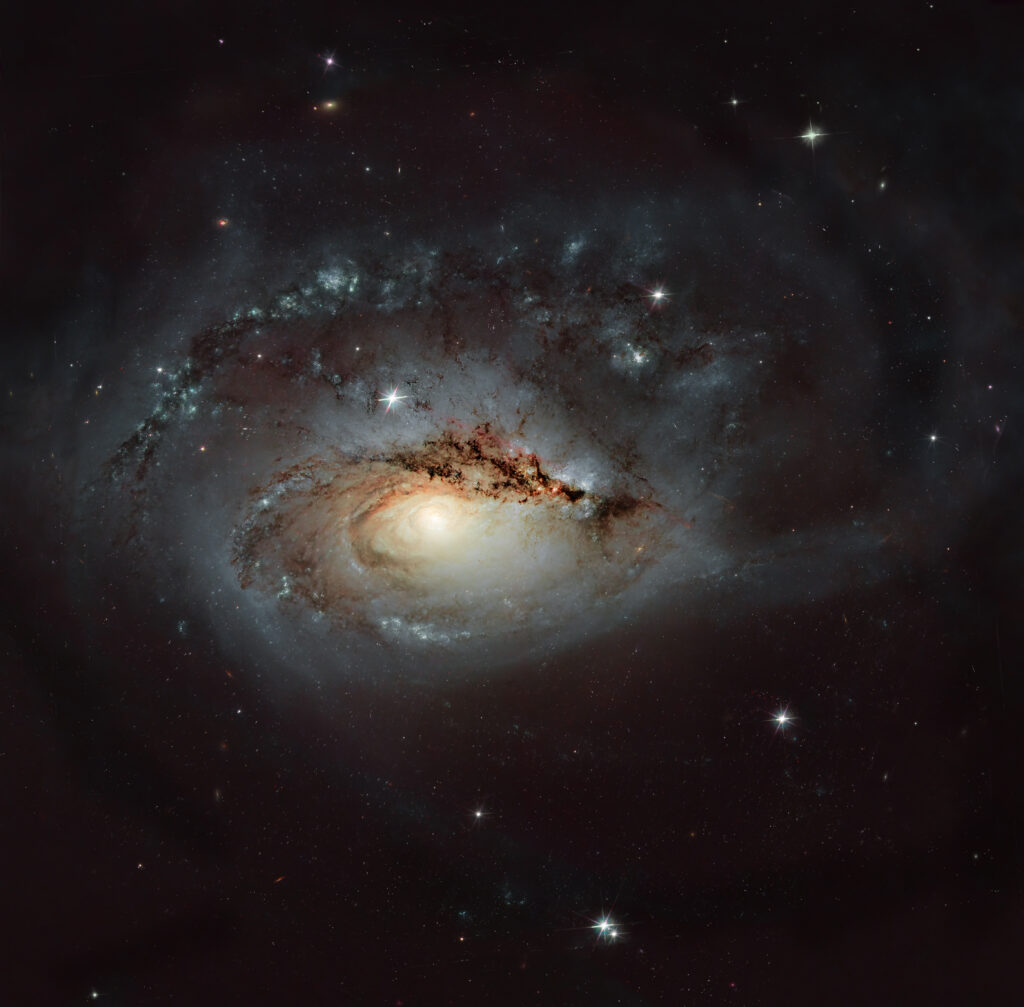
Shostak teams H1 analysis of the group concluded that while NGC 1961 presents a total mass at least twenty times that of any other group member, NGC 1961 is normal for its type in regard to integral property ratios, and these ratios appear normal, within a factor two, for the other listed galaxies as well. They also noted that the other members of the group have normal masses, with the exception of object B[xx].
About NGC 1961 extraordinary mass, peculiar position at the edge of a small galaxies group of much smaller galaxies and displaying of an unusual head-tail morphology H1 distribution, Shostak and colleagues 1982 suggested that the peculiar form is a simple extension of that of the galaxy, with extraordinary H1 features as a deformation of NGC 1961 itself, rather than the half-consumed remains of an extragalactic object, and its unusual asymmetric morphology with extensive wing of gas extending 30 Kpc to the north-west and a sharp edge to the south-west suggested that the disturbed appearance is due to stripping of the gas in NGC 1961 by a hot intergalactic medium – IGM, discarding the possibility of tidal interaction with another galaxy since there is no one with a large enough mass sufficiently close to NGC 1961. Shostak and team also dismissed the possibility of a merger with another galaxy or an intergalactic gas cloud since they found no trace of a merger remnant such a second nucleus or disturbed velocity distribution in the H1 gas emission[xxi].
According to Lisenfeld and colleagues 1998 the radio records at all frequencies show a peculiar morphology, which is similar to the optical image: bright central nucleus is resolved in the higher resolution images and consists of two peaks – one which corresponds to the optical peak and a second which coincides with a dust lane. Furthermore, a bright radio arm is visible in the south-east, coinciding with the bright optical south-eastern arm. The optical spiral arm extending from the west of the nucleus and to the south is also visible in the radio image. At all frequencies, there is an extended envelope of radio emission visible which surrounds the nucleus and the south-eastern arm [xxii].
Lisenfeld team research focused about spectral analysis revealed details about star formation history featured by an epoch of intense star formation which ended ≤9 x 10⁷ yr ago, with a beginning epoch that cannot be constrained by available data.
Shostak 1982 studies suggested that an encounter of NGC 1961 with an intergalactic cloud could took place less than 5 10⁸ yr ago (the rotation time-scale) and triggered an episode of intense star formation in the south-eastern arm, as also evinced by the optical color images with south-eastern arm of blue color, indicating recent star formation, hypothesis consistent with star formation history inferred by Lisenfeld 1998.
About peculiar morphology of NGC 1961, Shostak thesis focused on the collision of the galaxy with an intergalactic cloud cannot find coherent evidences in Pence and Rots researches of 1997 which didn’t find the massive intergalactic cloud required, nor ionized neither neutral gas.
Lisenfeld and team high resolution radio images revealed the presence of a second nucleus in the center of NGC 1961 consistent with an advanced merger, rather than collision with a massive intergalactic gas cloud, and the disturbed optical and H1 appearance should be explained as such merging remnant[xxiii].
Combes et Al. 2009[xxiv] morphologic and kinematic information gleaned form CO(1-0) and CO(2-1) observations of NGC 1961 has provided a set of important clues which in conjunction with the other data available, contribute to understand the galaxy’s recent dynamic history, with most of molecular gas distributed in a disk whose velocity field is reasonably regular, presenting morphologies and structures quite asymmetric, with a one-armed spiral winding through roughly 270 degrees in azimuth, or more likely a molecular ring, a hint of a nuclear gas bar, a nuclear stellar bar of roughly 1 Kiloparsec in diameter, a a south-western emission coincides with a peak in the near infrared records, at about 5 Kiloparsec from the center of NGC 1691, splitting in three smaller components, suggesting the disruption of a stellar system, and maybe a splitting which could be also partially due to dust. All these data help evaluate the merits of the minor merger and ram pressure stripping scenario which have been discussed upper to account for the large-scale asymmetries seen in the galaxy: Combes evinced, because of the absence of IGM, to the conclusion that a tidal encounter or minor merger is the most likely explanation for NGC 1961’s current state of disruption, and the galaxy interaction cannot be a prograde grazing passage, and the interaction must be as retrograde or nearly head-on, with rings detected which favor a head-on encounter, with small impact parameters, as it seems confirmed by Spitzer IRAC images brought new insight on the true morphology of NGC 1961, with dust emission clearly revealing two off-centered rings, in a morphology similar to the Cartwheel galaxy. The possible existence of the satellite remnant, suggested by Lisenfeld et Al. 1998, il actually supported also by the NIR data that trace the stellar density, with a clearly visible second nucleus, split into three clumps, distant from the NGC 1961 center about 6.1 kiloparsec; Näränen and Torstensson 2004 study shows this satellite nucleus as partially hidden by a dust lane, with star formation process strongly enhanced in the rings, delineated by multiple blue hot spots[xxv].
Hubble data better cropped to galaxy final version
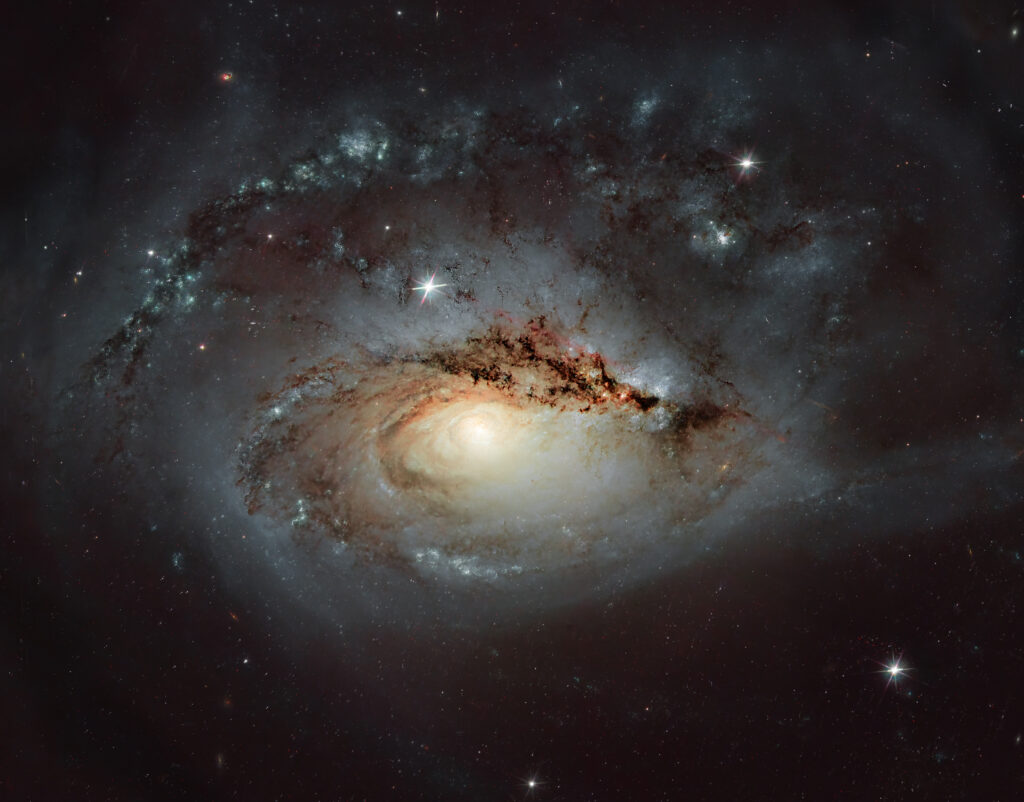
[i] Andreoli C., 2022 “Hubble Studies a Spectacular Spiral” NASA Hubble Mission Team, 1 Min Read 14th September 2022. Cfr.: https://science.nasa.gov/missions/hubble/hubble-studies-a-spectacular-spiral/ [02/01/2024]
[ii] Rubin V. C., Ford W. K., Roberts M. S., 1979 “Extended rotation curves of high-luminosity spiral galaxies. V. NGC 1961, the most massive spiral known” Astrophysical Journal, Vol. 230, p. 35-39 (1979).
Cfr.: https://ui.adsabs.harvard.edu/abs/1979ApJ…230…35R/abstract [29/12/2023]
Pence W. D., Rots A. H., 1996 “X-Ray Properties of the NGC 1961 Group of Galaxies” The Astrophysical Journal, 478 March 20th 1997: 107-111. Cfr.: https://iopscience.iop.org/article/10.1086/303758/fulltext/ [29/12/2023]
[iii] Arp H. C., 1966 “Atlas of Peculiar Galaxies”, Pasadena, Caltech, also in Astrophysical Journal Supplement, vol. 14; Cfr. https://ui.adsabs.harvard.edu/abs/1966ApJS…14….1A/abstract [31/12/2023]
[iv] Fruscione A., Griffiths R. E., 1991 “Search for starbursts among X-ray-selected galaxies – Optical spectroscopy” Astrophysical Journal, Part 2 – Letters (ISSN 0004-637X), vol. 380, Oct. 10, 1991, p. L13-L16. Cfr.: https://adsabs.harvard.edu/full/1991ApJ…380L..13F [29/12/2023]
[v] Shostak G. S., 1978 “Integral properties of late-type galaxies derived from H I observations.” Astronomy and Astrophysic 68, 1978:321. Cfr.: https://ui.adsabs.harvard.edu/abs/1978A%26A….68..321S/abstract [29/12/2023]
[vi] Shostak G. S., Hummel E., Shaver P. A., Van der Hulst J. M. & Van Der Kruit P. C., 1982 Astr. Astrophys., 115:293.
[vii] Gotterman S. T., Hunter Jr. J. H., Shostak G. S., 1982 “The NGC 1961 group of galaxies” Monthly Notices of the Royal Astronomical Society, Vol. 202, 21P-24P (1983). Cfr.: https://ui.adsabs.harvard.edu/abs/1983MNRAS.202P..21G/abstract [31/12/2023]
David L. P., Jones C., Forman W., Daines S., 1994 “ Mapping the Dark Matter in the NGC 5044 Group with ROSAT: Evidence for a Nearly Homogeneous Cooling Flow with a Cooling Wake” The Astrophysical Journal, vol. 428, no. 2, pt. 1, p. 544-554. Cfr.: https://ui.adsabs.harvard.edu/abs/1994ApJ…428..544D/abstract [31/12/2023]
[viii] Shostack et Al., 1982 : 301
[ix] Nilson P., 1973 “Uppsala General Catalogue of Galaxies (UGC)” Uppsala Astron. Obs. Ann. 6., Uppsala Atronom. Obs., Ann.6”; Cfr.: https://heasarc.gsfc.nasa.gov/db-perl/W3Browse/w3table.pl?tablehead=name%3Dugc&Action=More+Options and https://heasarc.gsfc.nasa.gov/W3Browse/galaxy-catalog/ugc.html [02/01/2024]
Zwichky F., Herzog E., 1968 “Catalogue of Galaxies and of Cluster Galaxies” Pasadena: California Institute of Technology (CIT), |c1961 https://ui.adsabs.harvard.edu/abs/1961cgcg.book…..Z/abstract [02/01/2024]
Sancisi R., Allen R. J., 1979 “Neutral hydrogen observations of the edge-on disk galaxy NGC 891” Astronomy and Astrophysics, vol. 74, no. 1, Apr. 1979, p. 73-84. Cfr.: https://ui.adsabs.harvard.edu/abs/1979A%26A….74…73S/abstract [02/01/2024]
[x] Nilson P., 1973
[xi] Gotterman et Al., 1983:23.
[xii] Fabbiano G., Kim D. W., Trinchieri G., 1992 “The X-Ray Spectra of Galaxies. II. Average Spectral Properties and Emission Mechanisms” in Astrophysical Journal v.393, p.134. Cfr.: https://ui.adsabs.harvard.edu/link_gateway/1992ApJ…393..134K/doi:10.1086/171492 [29/12/2023]
[xiii] Pence W. D., Rots A. H., 1996:107
[xiv] Bierman P., Kronberg P. P., Madore B. F., 1982 “The detection of hot intergalactic gas in the NGC 3607 group of galaxies with the Einstein satellite” in Astrophysical Journal, Part 2 – Letters to the Editor, vol. 256, May 15, 1982, p. L37-L40 cfr. https://ui.adsabs.harvard.edu/abs/1982ApJ…256L..37B/abstract [31/12/2023]; Forman W., Jones C., 1982 “ X-ray-imaging observations of clusters of galaxies” in Annual review of astronomy and astrophysics. Volume 20. (A83-12176 02-90) Palo Alto, CA, Annual Reviews, Inc., 1982, p. 547-585. Cfr.: https://ui.adsabs.harvard.edu/abs/1982ARA%26A..20..547F/abstract [31/12/2023]
[xv] Dell’antonio J. P., Geller M., J., Fabricant D. G., 1994 “X-ray and optical properties of groups of galaxies” Astronomical Journal (ISSN 0004-6256), vol. 107, no. 2, p. 427-447. Cfr.: https://ui.adsabs.harvard.edu/abs/1994AJ….107..427D/abstract [31/12/2023]
Pildis R. A., Bergman J. N., Evrad A. E., 1995 “ROSAT observations of compact groups of galaxies” Astrophysical Journal v.443, p.514; Cfr.: https://ui.adsabs.harvard.edu/abs/1995ApJ…443..514P/abstract [31/12/2023]
Mulchaey J. S., Davis D. S., Mushotzky R. F., Burstein D., 1996 “An X-Ray Atlas of Groups of Galaxies” The Astrophysical Journal Supplement Series, Volume 145, Number 1. Cfr.: https://iopscience.iop.org/article/10.1086/345736/pdf [31/12/2023]
[xvi] Ponman T. J., Bertram D., 1993 “Hot gas and dark matter in a compact galaxy group” Nature 363, 51–54 (1993). https://doi.org/10.1038/363051a0; also cfr. https://ui.adsabs.harvard.edu/abs/1993Natur.363…51P/abstract [31/12/2023]
David L. P., Jones C., Forman W., Daines S., 1994 “ Mapping the Dark Matter in the NGC 5044 Group with ROSAT: Evidence for a Nearly Homogeneous Cooling Flow with a Cooling Wake” The Astrophysical Journal, vol. 428, no. 2, pt. 1, p. 544-554. Cfr.: https://ui.adsabs.harvard.edu/abs/1994ApJ…428..544D/abstract [31/12/2023]
[xvii] Snowden S. L., Mc Cammon D., Burrows D. N., Mendenhall J. A., 1994 “Analysis Procedures for ROSAT XRT/PSPC Observations of Extended Objects and the Diffuse Background” Astrophysical Journal v.424, p.714.
Cfr.: https://ui.adsabs.harvard.edu/abs/1994ApJ…424..714S/abstract [02/01/2024]
[xviii] Reichart G. A., 1993 “The ROSAT IDL Recipes Cookbook (Greenbelt, MD, GSFC)
[xix] Pence et al., 1997: 109, 110
[xx] Shostak et Al., 1982: 301
[xxi] Ibidem
[xxii] Lisenfeld U., Alexander P., Pooley G. G., Wilding T., 1998 “Cosmic ray propagation and the star formation history of NGC 1961” Monthly Notices of the Royal Astronomical Society, Volume 300, Issue 1, pp. 30-38.
Cfr.: https://ui.adsabs.harvard.edu/abs/1998MNRAS.300…30L [02/01/2024]
[xxiii] Lisenfeld et Al., 1998: 37
[xxiv] Combes F., Baker A. J., Schinner E., Garcia-Burillo S., Hunt L. K., Boone F., Eckart A., Neri R., Tacconi L. J., 2009 “Molecular gas in NUclei of GAlaxies (NUGA)* XII. The head-on collision in NGC 1961” Astronomy & Astrophysic Journal Volume 503, Number 1, August III 2009 https://www.aanda.org/articles/aa/full_html/2009/31/aa12181-09/aa12181-09.html [02/01/2024]
[xxv] Combes et Al., 81.
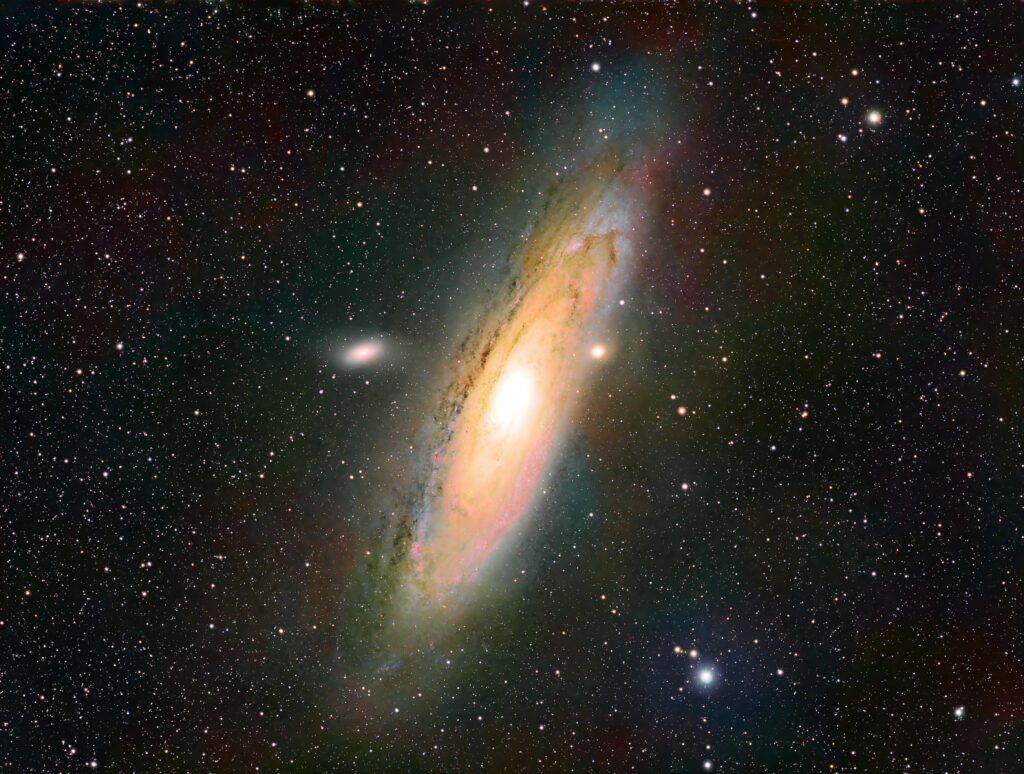
This is an attempt of narrowband and wideband data integration of M31 Galaxy, both set recorded on several sessions between 25/05/2023 and 28/11/2023.
Ha and Oiii subframes were recorded at 180 and 300 seconds; LRGB at 60 seconds, everything by William Optics Redcat 51 and ASI1600mm Pro at -20 C about.
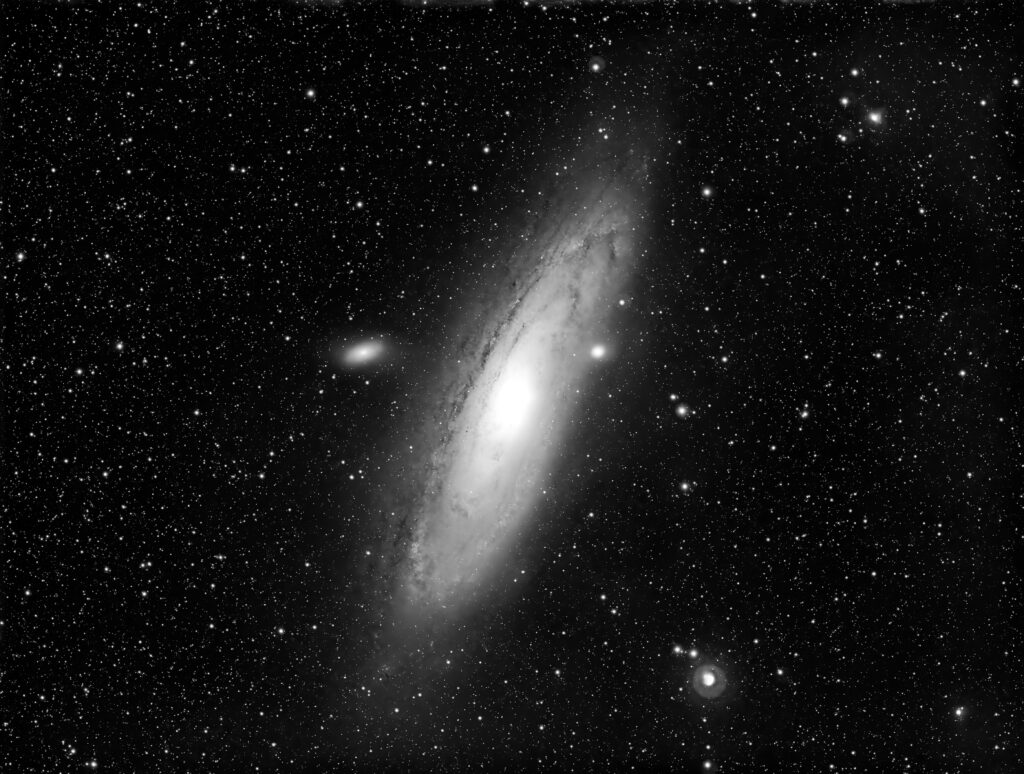
Ha narrowband channel integrated R channel
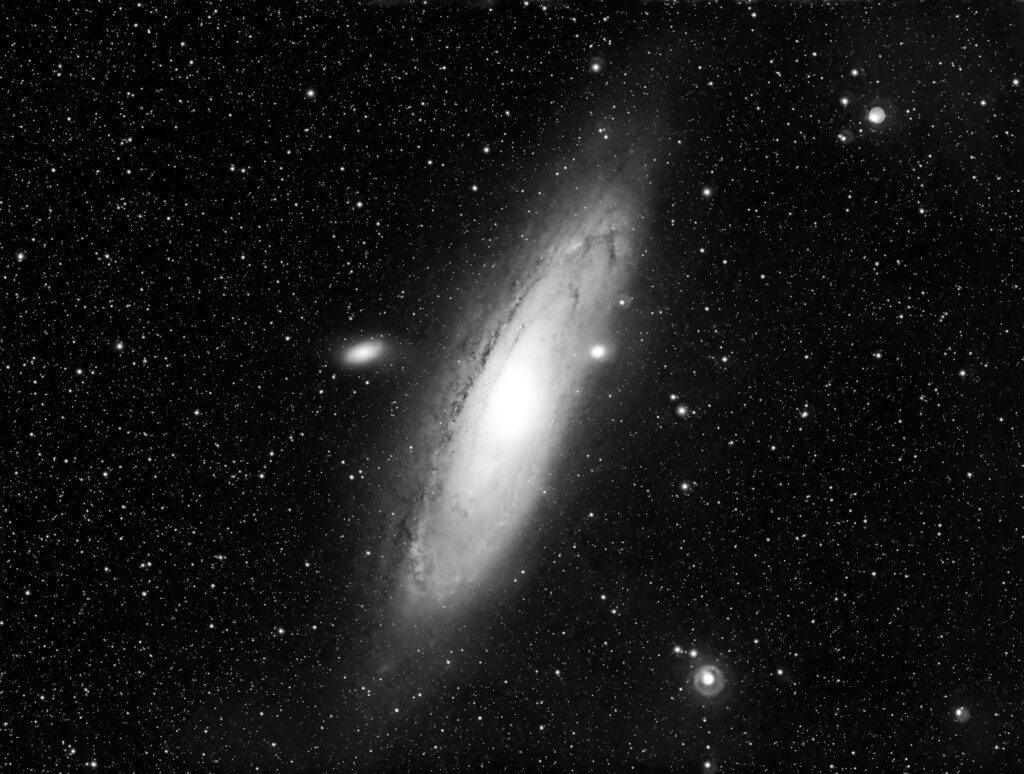
Oiii narrowband channel integrated G and B channels
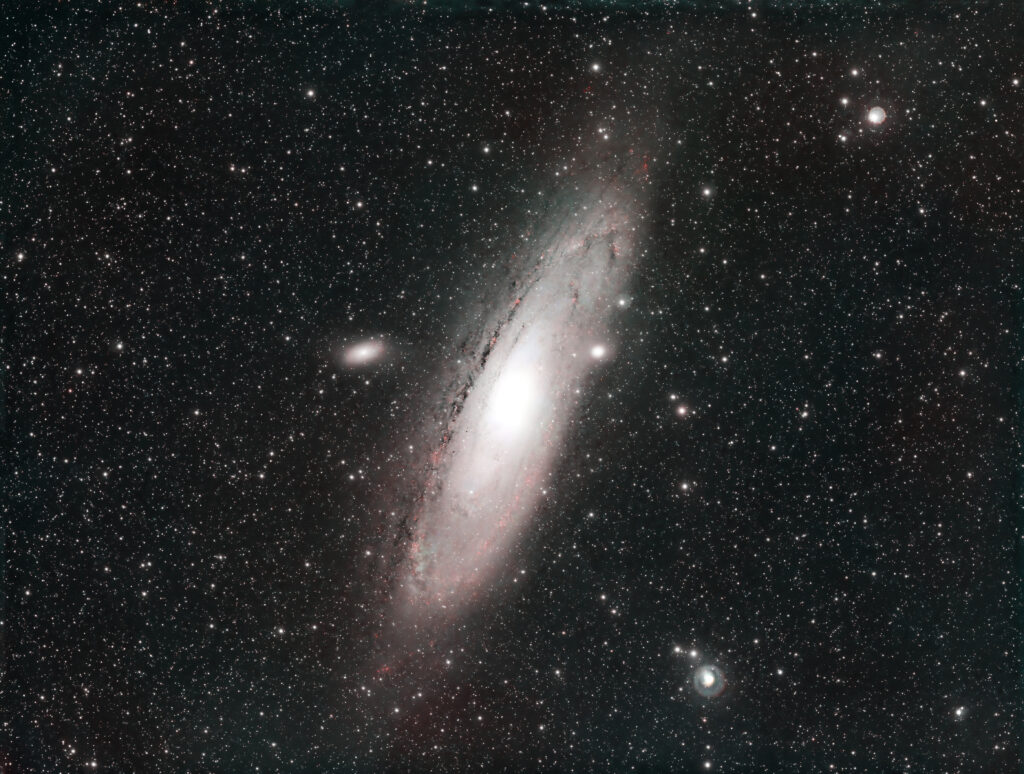
HOO palette and LRGB integration
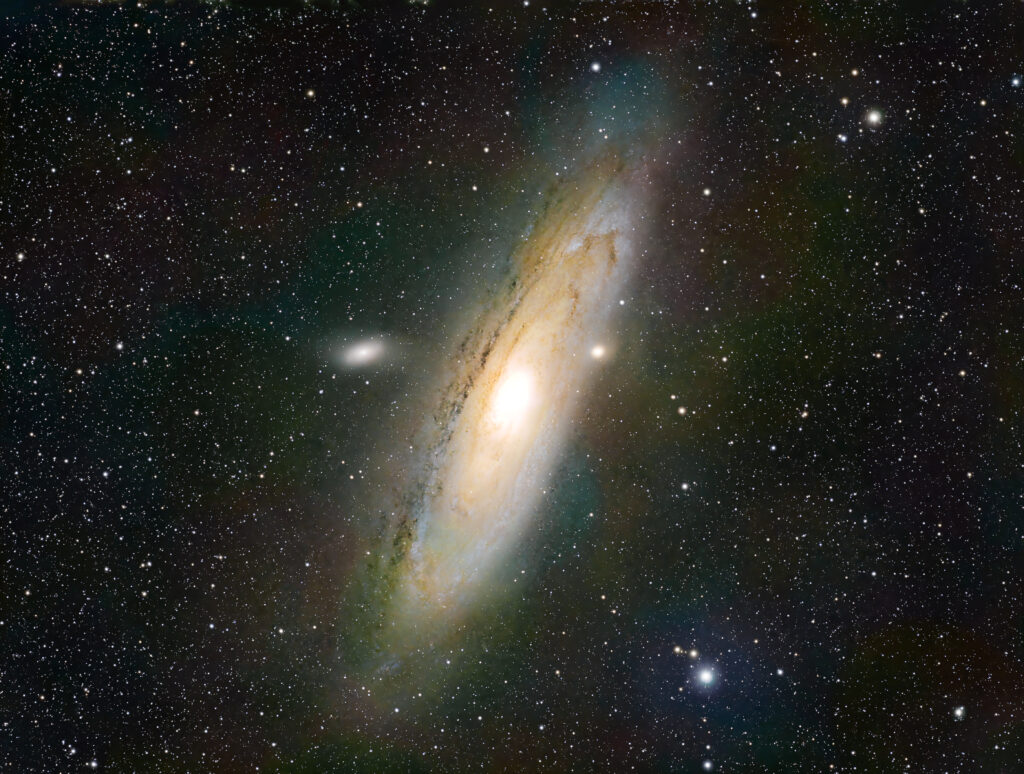
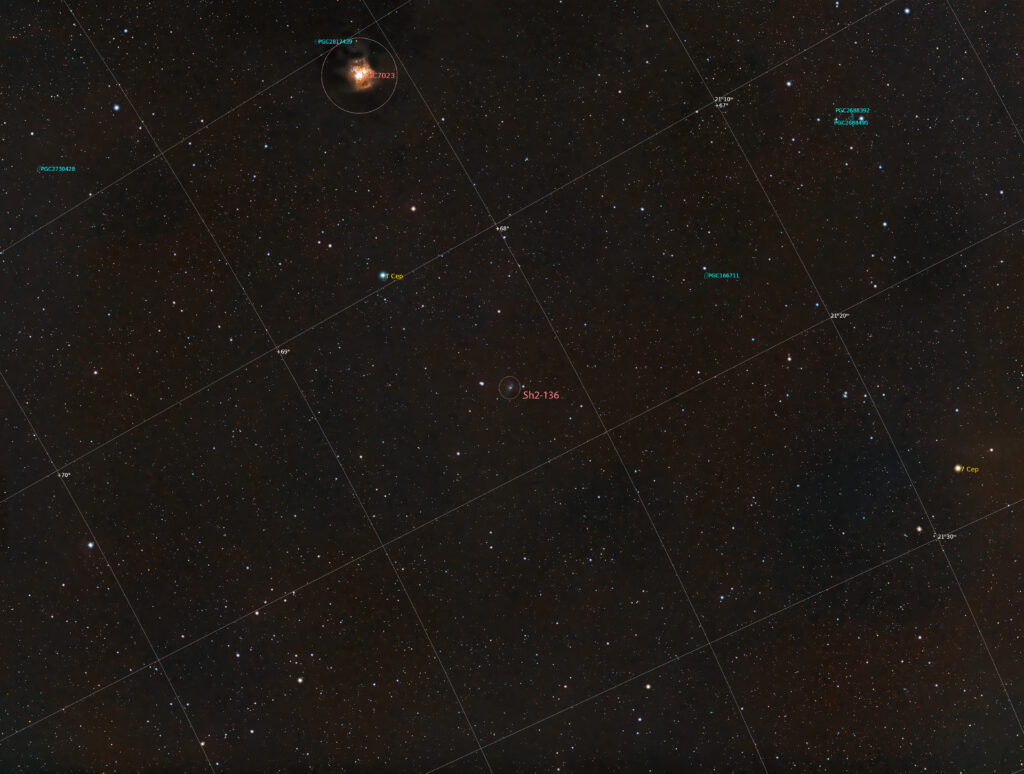
William Optics Redcat 51 and ASI1600mm Pro narrowband records for this region, 180 seconds subframes in Ha, Hb, Oiii and Sii and Optolong Lpro 60 seconds.
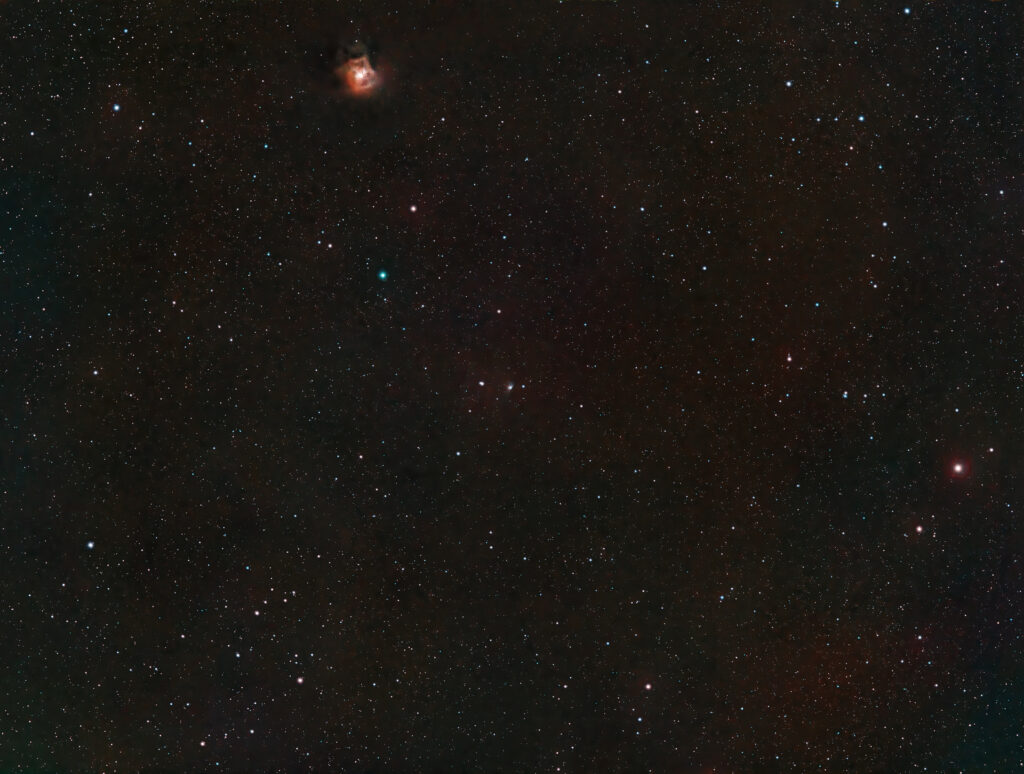
Lpro and SHO integration
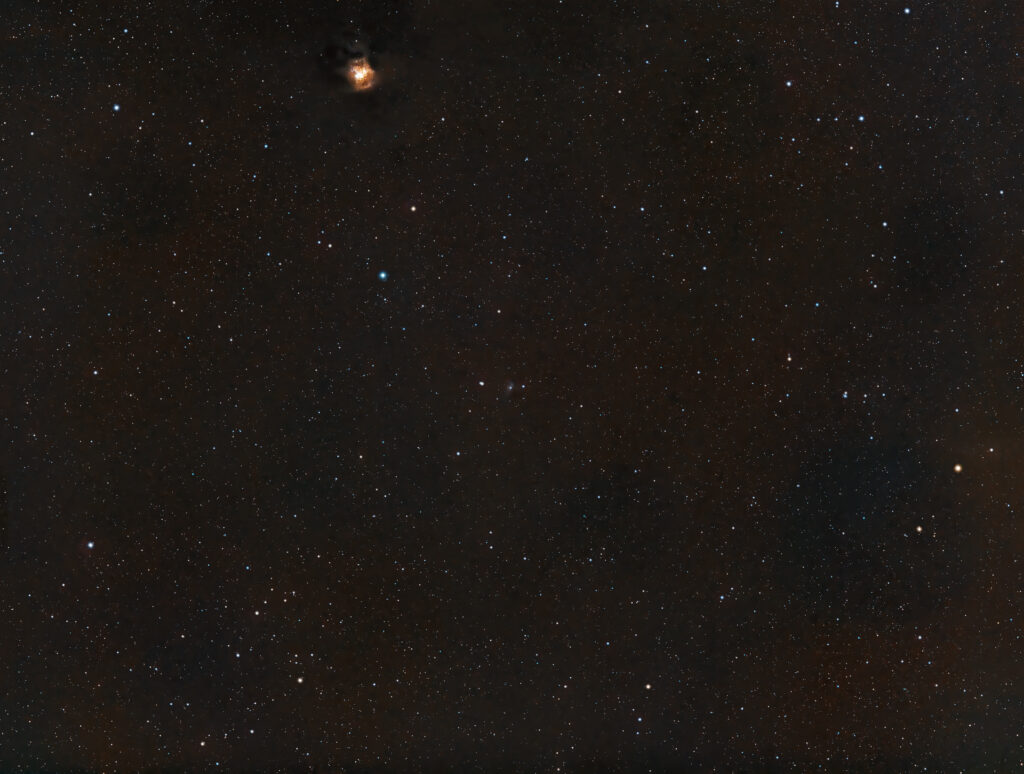
Sii Ha and Oiii+Hbeta integration
Astrobin: https://www.astrobin.com/q8359s/B/
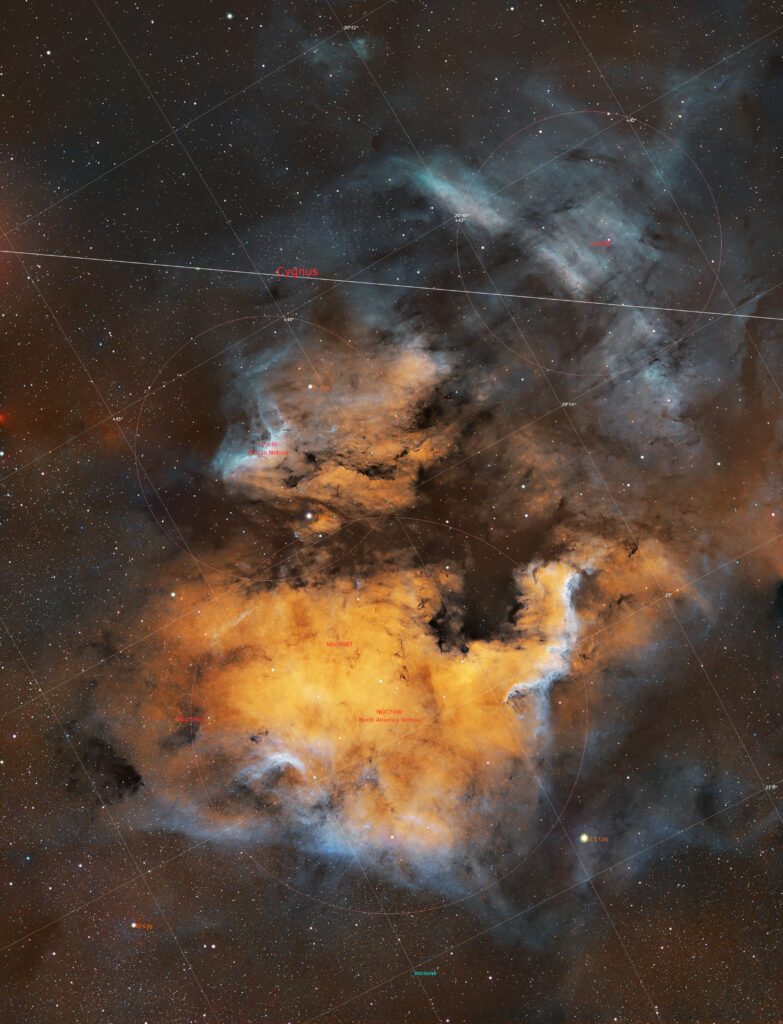
I’m totally in love with Cygnus region, and try a 2 panel mosaic work focusing about NGC7000 and surroundings.
Astrobin:
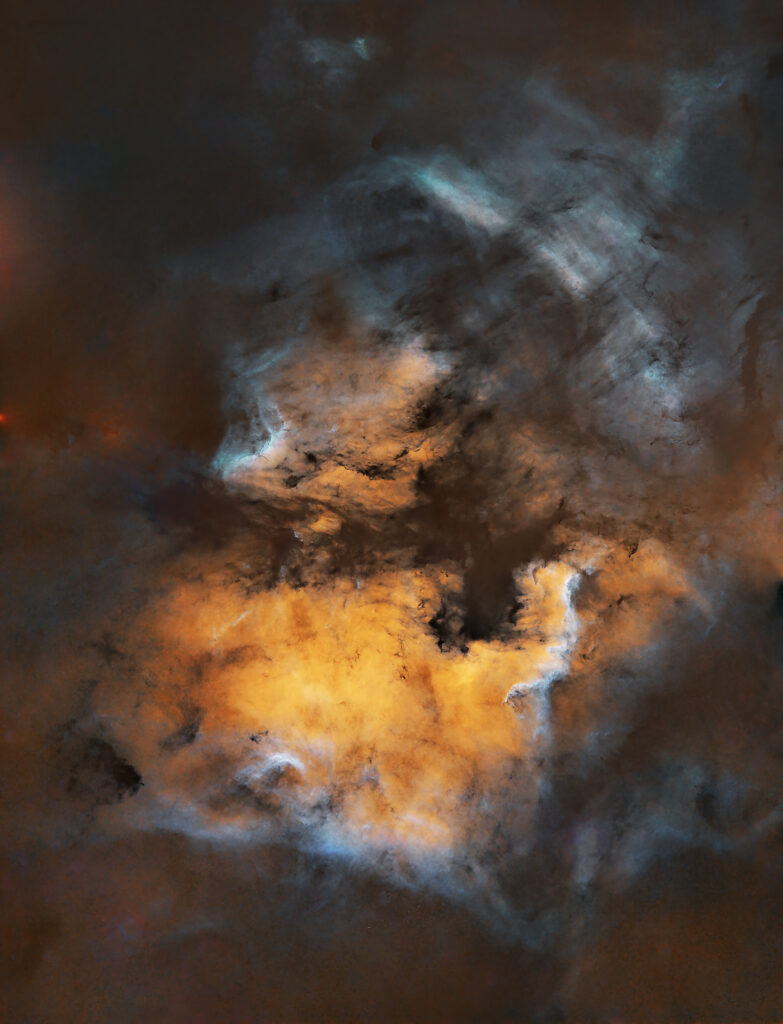
Starless and star integration made in Photoshop, with layers group blending in screen mode.; photoshop master available here > https://e.pcloud.link/publink/show?code=XZVj0sZbCSHNHTHUq8zzOIsayXkFHXxBDgX
Hbeta Optolong filter data used to intergate Oiii records for blu channel within RGB channel combination.
Complete framelist (Astrobin formatted CSV .txt file) available here: https://e.pcloud.link/publink/show?code=XZ1j0sZkq9w5KIavmyB9PUde9Nt4fcxTR9k
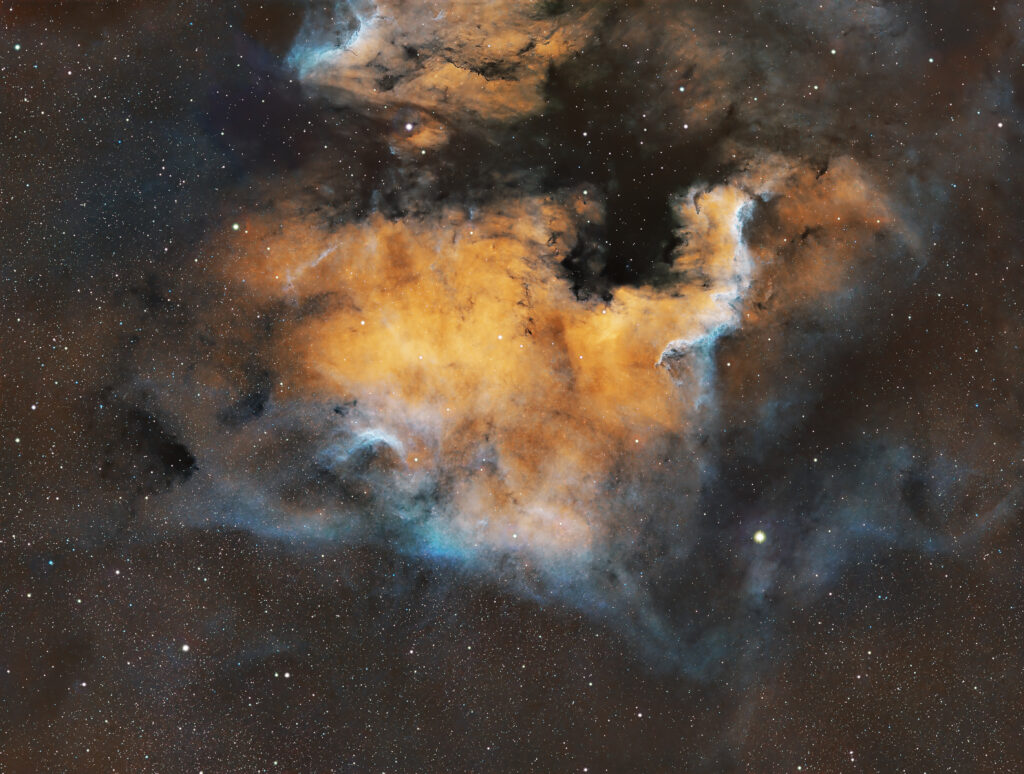
Cygnus NGC7000 region in narrowband, with Hbeta records as integration of Oiii emission for Blue channel.
Astrobin: https://www.astrobin.com/76k369/
This is the second of a 2 panel mosaic focused about this region of Cygnus, so rich and beautiful! Subframes recorded between 27/05/2023 and 12/09/2023 with William Optics Redcat 51 and ASI1600mm Pro, at -20C, gain 173 and 180sec of exposition; some subframes at 300sec expecially for Halpha channel help in faint nebulosity detail emerging.
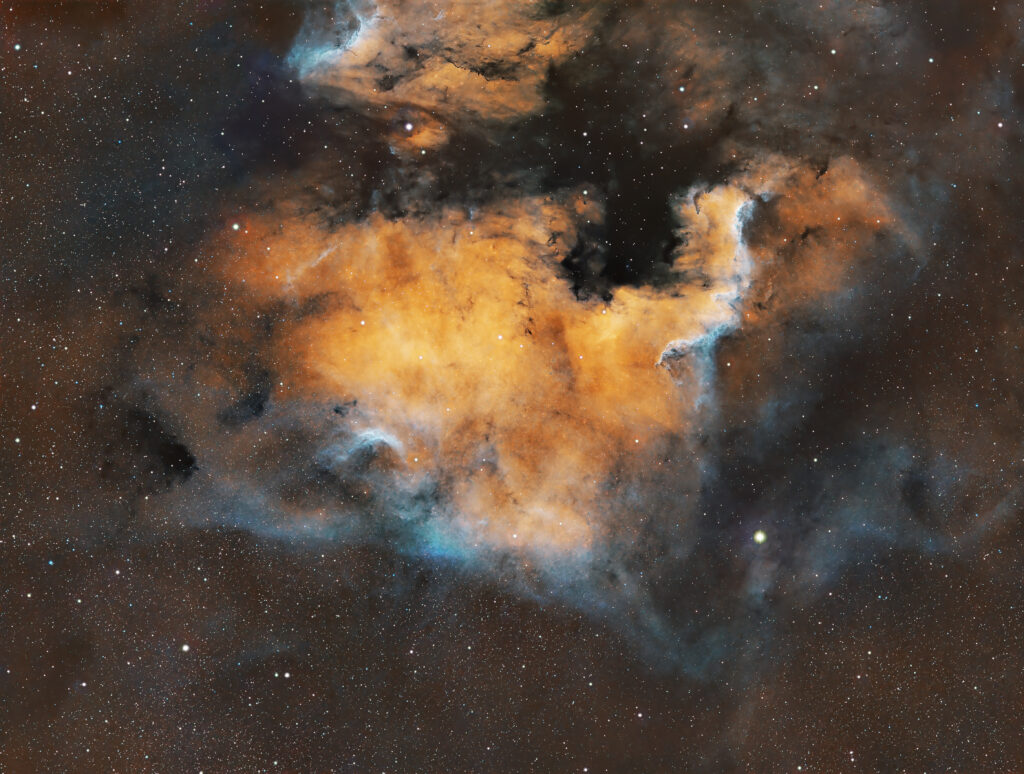
Typical SHO palette
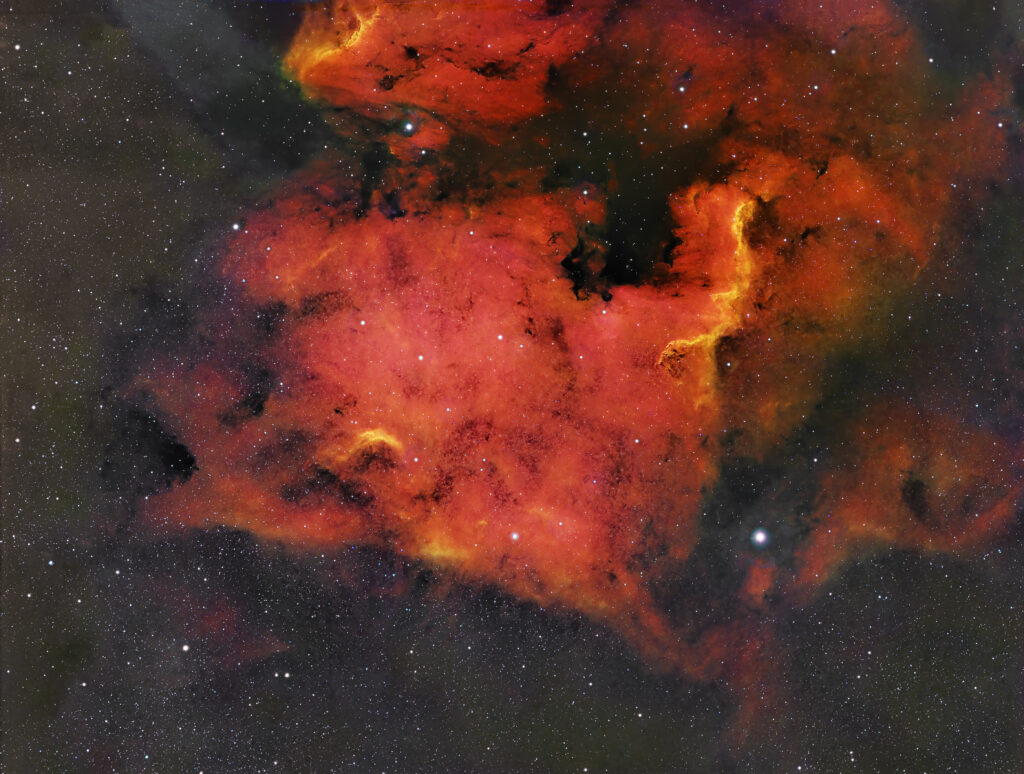
Ha Oiii and Hbeta palette integration
Photoshop master with layers group and adjustement vailable here: https://e.pcloud.link/publink/show?code=XZ9NXsZo1uiGtOAUqjyYRcfYkusnFHgzGnV
Framelist (Astrobin CSV preformatted) available here: https://e.pcloud.link/publink/show?code=XZdNXsZg65lchLciqBcYOw5sGYQkY9gXpWk